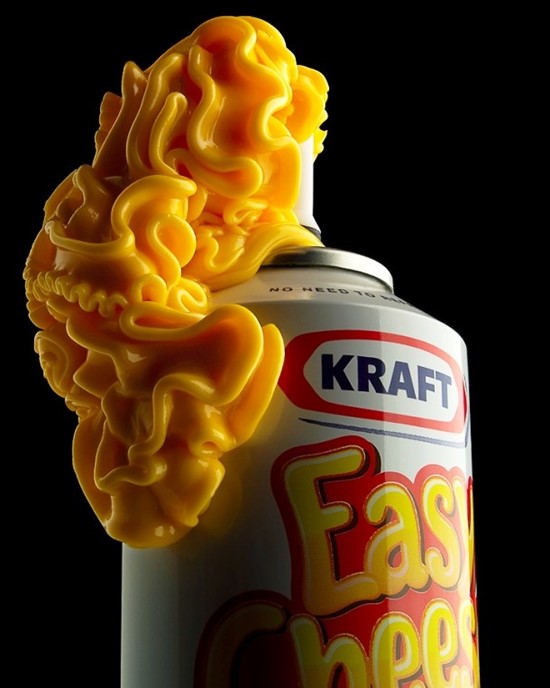We Could’ve Been Eating Entire Meals From Spray Cans
August 15, 2016 in Daily Bulletin

To this day, in the aisles of supermarkets around the world, you can see in Cheese Whiz and Reddi-Whip relics of a bygone golden era of food in spray cans. For this is what the future was meant to be like according to Nadia Berenstein:
Imagine a multi-course dinner materializing from a series of aerosol canisters. Elegant canapés crowned with gobbets of liverwurst and cheese-spread, sprayed from a can. A pair of self-heating cans deliver the main course: a cloud of fluffy mashed potatoes alongside a slurry of barbecued meat, finished off with a misting of hickory flavor “for a gourmet touch.” For dessert, how about a spray-on sundae? Ice cream, banana whip, chocolate sauce, maraschino topping—just push and go.
What happened? She explained:
- Inspired by the success, after World War 2, of whipped cream in a can, food manufacturers looked to push the boundaries of meals that could be aerosolized.
- Ideas that made it to market included: spray-on martini, spray-on barbeque sauce, spray-on coffee, and spray-on cake batter.
- Food engineers believed that such innovation would go as far as space, giving astronauts an easy way to consume a variety of foods.
- But while manufacturers loved the idea, families were less enthused about giving children food in cans that could be sprayed all over furniture.
- The marginal amount of convenience that food in spray-cans offered, also didn’t quite justify the added cost of buying gas-pressurized foods.
- And for many there was a lingering unappetizing link between aerosol cans and hygiene products like hair sprays and deodorants.
- The final nail in the coffin for spray-on meals though, was a shift in societal preferences for more natural, less proceed foods.
Read more about some of the early engineering challenges that spray-can food manufacturers overcame, and the possibility of a spray-on renaissance in the years ahead, over here.
Source: Lucky Peach
Join the Discussion! (No Signup Required)